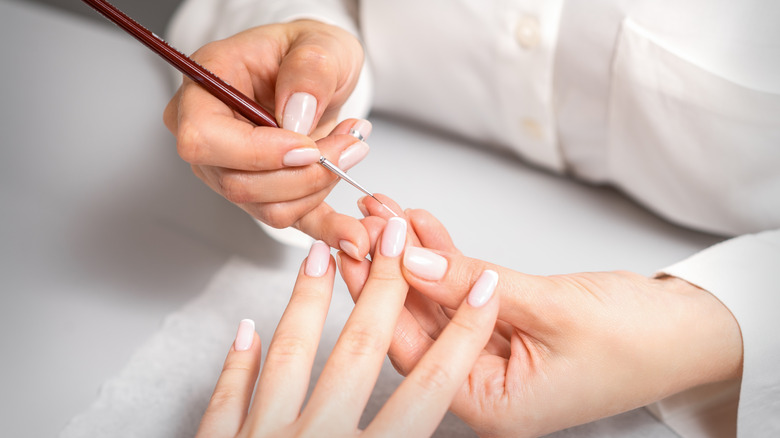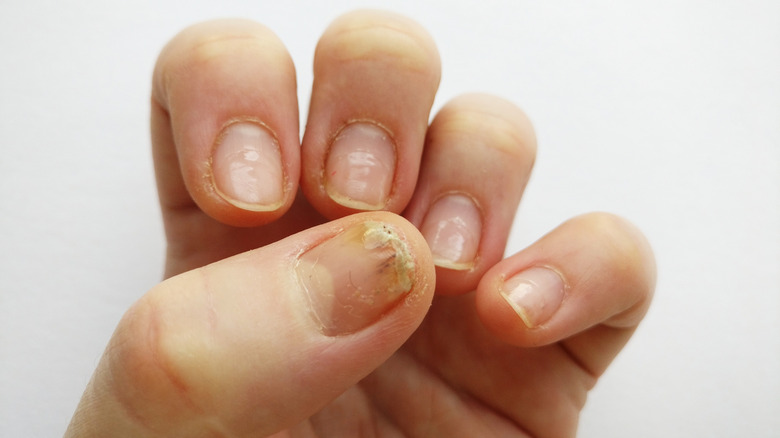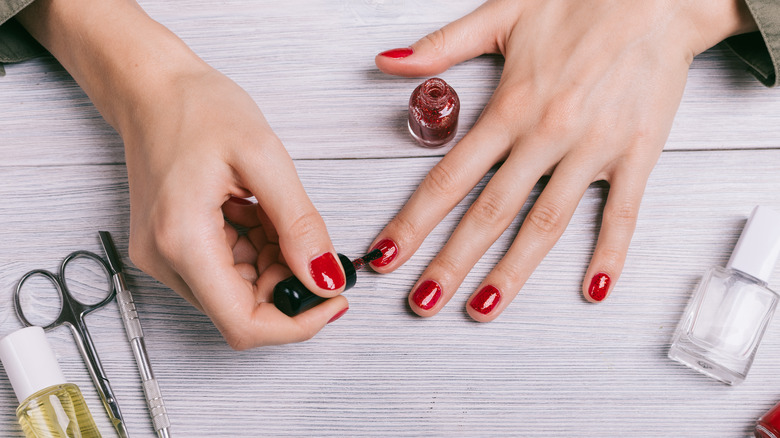Wait, Can You Be Allergic To A Gel Manicure? Here's What To Know
We may receive a commission on purchases made from links.
Gel manicures have exploded in popularity since they entered mainstream consciousness in the late 1990s. What many nail enthusiasts (and even some professionals) don't realize is that gel polish and extensions were first launched in the early 1980s. However, by the end of the decade, they had disappeared from the market for one specific reason — the prevalence of adverse skin reactions. Once the industry knew more about the importance of matching the correct curing lights to each type of gel product, the concern lifted, and gel was given another chance.
It is now understood by most nail technicians that overexposure to uncured or under-cured gel nail products can cause permanent skin allergies to develop. There are also people who are naturally allergic to one or more of the ingredients in gel products. While the risks of gel allergies are finally being talked about, the general population is still in major need of education. Professionals like Amber the Nail Whisperer on TikTok have made it their mission to provide information about the risks that come along with gel products. Here's what you need to know.
What is contact dermatitis?
When a skin reaction develops in response to the application of a topical ingredient, it's referred to as contact dermatitis. Contact dermatitis can present as red, burning skin, blisters, peeling and cracking skin, or itchy red bumps. These symptoms might appear on, under, or around your nails or in places that you frequently touch, like your face or neck. When the skin's barrier layer is repeatedly exposed to chemicals that can break down that barrier, such as those in many polish removers and bonding agents, irritants can penetrate deep into the skin. Once they bind to the proteins that reside there, they can hitch a ride with the body's white blood cells.
When an irritant makes contact with white blood cells, it becomes a known threat to that person's immune system — and the human immune system never forgets. Symptoms intensify as the invading irritant is fought and will only begin to cease once the allergen (your gel manicure) is removed. Unfortunately, once this type of reaction occurs, the allergy to the substance in question is typically lifelong.
Gel alternatives
For lovers of gel manicures, developing an allergy to gel products can be a devastating blow. To make matters worse, most of the active ingredients in gel polishes and extensions are the same ones found in acrylics, so simply switching won't help you avoid a reaction. Basically, once you've experienced contact dermatitis, the health of your skin must take priority over the longevity of your manicure. After your skin has healed, there are safe options for painting your nails in the future.
Generally speaking, regular air-dry nail polishes are typically free from the most common allergens present in gel and acrylic products. If you'd like to be extra cautious, look for formulas that confirm they are free of methyl acrylate and other top allergens. These polishes will often be marketed as five-free, seven-free, or nine-free. Nowadays, these low-allergen formulas can be found from small indie brands like Olive & June and with industry giants like Sally Hansen.


